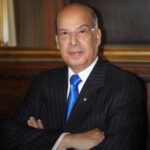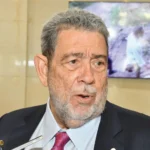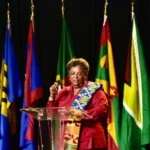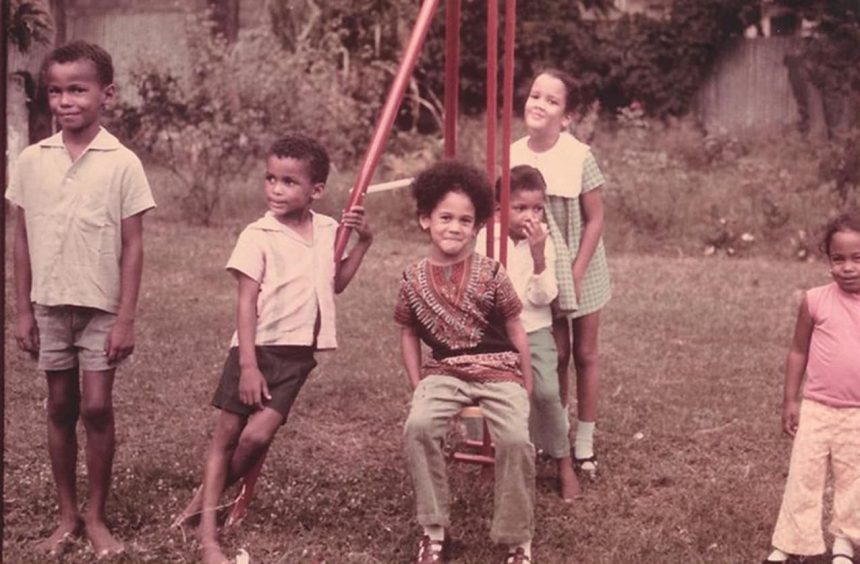BROWN’S TOWN, Jamaica — Three and a half years ago, Sherman Harris gathered together a clutch of family and friends at his home on a hilltop here in rural Jamaica to watch his cousin step into history.
As Kamala Harris took the oath of office as vice president of the United States, the room erupted in screams and tears, he recalled.
“Even talking to you now, I feel some sort of tears from my eyes too, you know,” Sherman Harris, 59, said in an interview with CNN. “It’s like tears of joy.”
Next week, they will gather again before his widescreen television to watch Harris make history once more, when she formally accepts the Democratic presidential nomination — becoming the first Black woman, the first Jamaican American and the first Asian American to become a major party’s White House standard-bearer.Although the milestone will be celebrated by her relatives in this town of some 12,000 people on the island’s northern coast, Harris’ Caribbean roots still are coming into focus for the millions of Americans getting acquainted with her after she was suddenly thrust to the top of the Democratic ticket a month ago when President Joe Biden ended his reelection bid and endorsed his vice president.
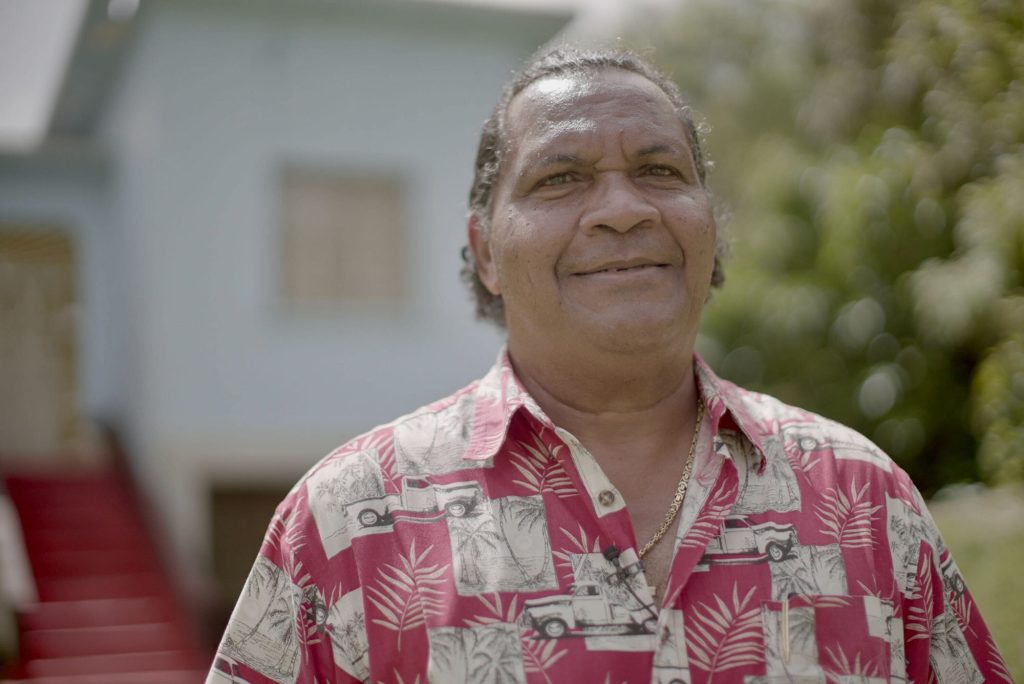
Sherman Harris in Brown’s Town, Jamaica.
Already, her Republican rival, Donald Trump, has sought to question her Black identity as the two vie for support among African American voters in states such as Michigan and Georgia who could determine the outcome of this fall’s race. At a gathering of Black journalists last month, Trump falsely claimed that Harris had only recently opted to identify as Black out of political opportunism.
“I don’t know, is she Indian or is she Black?” Trump asked in widely derided comments.
Harris is both. She’s the daughter of an Indian-born mother, Shyamala Gopalan, a breast cancer researcher who died in 2009, and a Jamaican-born father, Donald Harris, an 85-year-old retired Stanford University economist, who has largely remained in the background of his daughter’s public life.
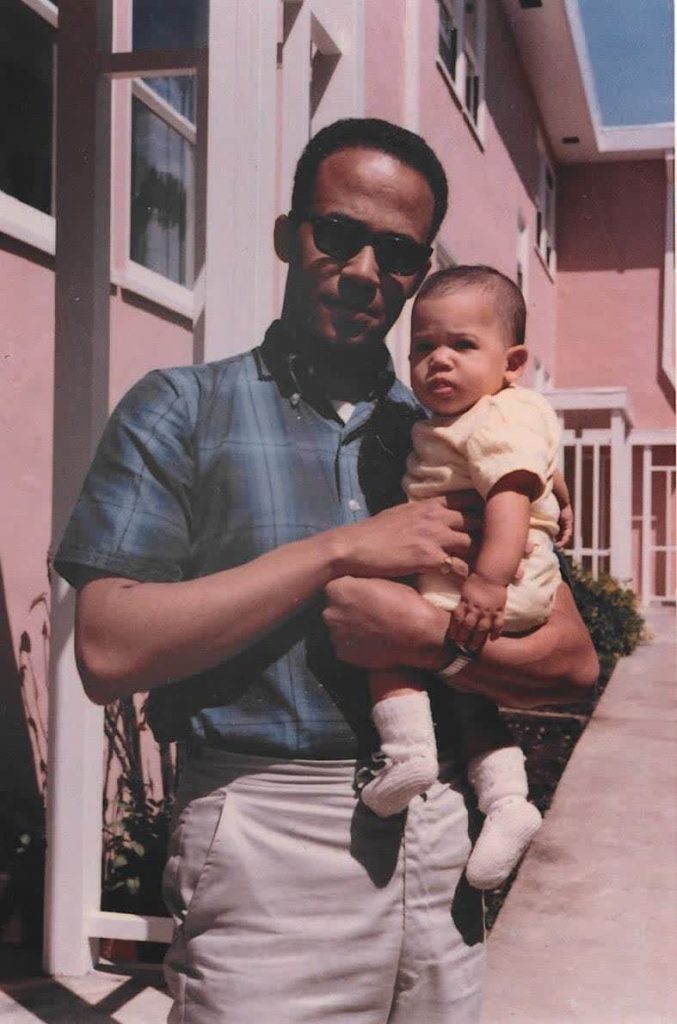
Young Kamala Harris and her father in California.
He hails from a family that stretches back for generations in Brown’s Town, a market town in St. Ann Parish, where vendors clustered along the main drag on a recent Sunday morning to sell glossy green avocados, yams and bundles of fragrant thyme.“You have to recognize individuals who come from humble abodes and really excel,” said Michael Belnavis, the mayor of St. Ann Parish who is mulling ways to honor Harris should she prevail in November. “Coming from Brown’s Town is as humble as it gets.”
Deep roots and a powerful matriarch
The town was named after Hamilton Brown, a slave owner who came to the island from Ireland and, according to family lore, is believed to have been an ancestor of Kamala Harris’ great-grandmother, Christiana Brown, also a descendant of enslaved Jamaicans.
“Miss Chrishy,” as Christiana Brown was known, helped raise her grandson, Donald Harris, who described her in an essay first published in 2018 in the Jamaica Global Online as “reserved and stern in look, firm with ‘the strap’ but capable of the most endearing and genuine acts of love, affection, and care.”
Harris has said his interest in economics and politics was sparked, in part, by observing Miss Chrishy as she went about her daily routine of operating her dry goods store in Brown’s Town.
Although she died in 1951, Miss Chrishy looms large to this day among her descendants, who still talk of her elegant dresses, proper manners and the high standards she set for her children and grandchildren.“She was the backbone,” said Latoya Harris-Ghartey, Sherman Harris’ 43-year-old daughter. Harris-Ghartey is executive director of Jamaica’s National Education Trust, a government-aligned organization focused on developing the island’s education infrastructure.
Her great-grandmother “believed in getting your books and having a solid education, those sorts of things,” Harris-Ghartey said. “I think that has passed on throughout the line. Everybody always pushes you to be better, to excel.”
Miss Chrishy had several children with Joseph Harris, who raised cattle and grew pimento berries — allspice in its dried form — on a farm perched high above Brown’s Town. He died in 1939, a year after Donald Harris was born, and is buried on the grounds of St. Mark’s Anglican Church — a sanctuary founded by Hamilton Brown and where Harrises have long worshipped.Brown’s Town might be a small place, but the family has occupied a prominent position there as landowners and businesspeople.
Today, Sherman Harris — Donald Harris’ first cousin — still lives on and works the Harris land, in an area known as Orange Hill for a citrus grove that once stood there, he said. One of its dominant features is the Harris Quarry, started by Sherman Harris’ late father, Newton. Sherman runs it now, and it still produces crushed limestone and bricks.
It’s one of his ventures. On a tour with CNN journalists, he proudly pointed out the three-story commercial building he owns in the heart of Brown’s Town.It’s to this landscape that Donald Harris would bring Kamala and her younger sister, Maya, on holidays, according to his 2018 essay — taking them through the town’s bustling marketplace, touring his primary school and other landmarks he found meaningful. He recounted the trio trekking through the cow pastures and overgrown paths on Orange Hill during one memorable visit in 1970, as they retraced his boyhood ramblings over the family property.
“Upon reaching the top of a little hill that opened much of that terrain to our full view, Kamala, ever the adventurous and assertive one, suddenly broke from the pack, leaving behind Maya the more cautious one, and took off like a gazelle in Serengeti, leaping over rocks and shrubs and fallen branches, in utter joy and unleashed curiosity, to explore that same enticing terrain,” he wrote. “I couldn’t help thinking there and then: What a moment of exciting rediscovery being handed over from one generation to another!”
Sherman Harris remembers all the cousins playing together during those jaunts to Jamaica in the 1970s, while the adults feasted and socialized. He and Kamala are the same age, born just days apart in October 1964.What stands out most from those memories, he said, is how smart the girls were – just like their dad, who rose from a rural boyhood to earn a doctorate from the University of California, Berkeley and become the first Black economics professor granted tenure at Stanford.
“Brilliant girls,” Sherman Harris said of Kamala and Maya. Even as young children, they would quiz him on the island’s current affairs, and “I wasn’t able to answer them,” he recalled. “I had to ask Daddy.”
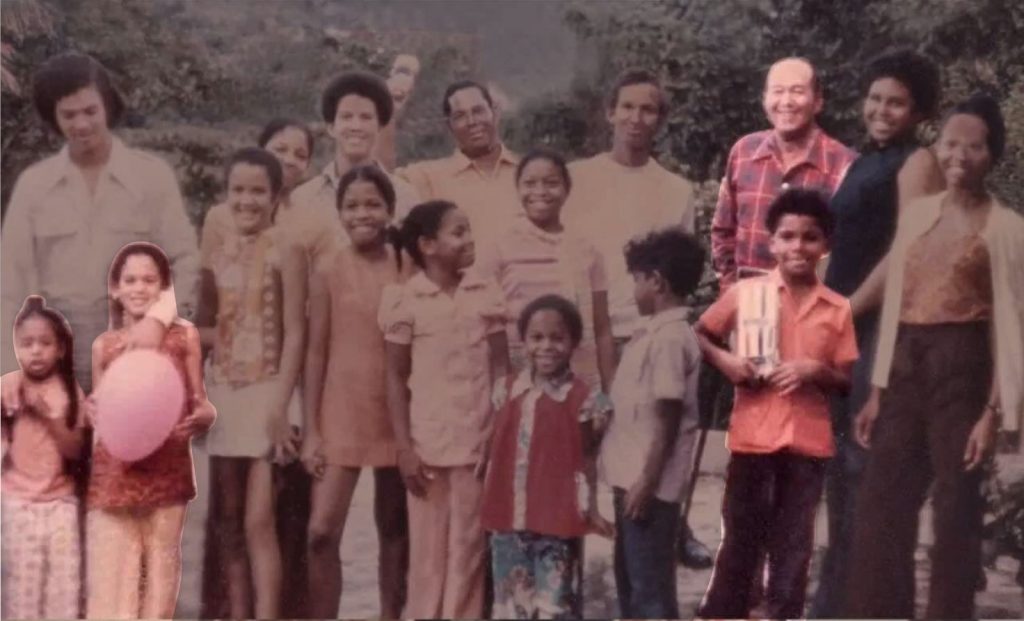
Kamala Harris appears in this undated photo at a relative’s home in Jamaica with her family, including her sister, Maya Harris, her paternal grandfather, Oscar Harris, and her cousin, Sherman Harris
Sherman Harris views his cousin’s ascension as yet another example of “Jamaica to the world,” a reference to the island’s culture, reggae music and food catching fire across the globe. It’s also a sign to him of the Harris drive.
“We have never ventured in much failure, you know,” he said of the Harris clan, adding that the family members are “always successful in whatever we do.”
Out of the spotlight
Even as his daughter climbs to new heights, Donald Harris has remained largely out of the spotlight.
He and Shyamala Gopalan, who met in the 1960s as graduate students at Berkeley, fell in love fighting for civil rights, Kamala Harris wrote of her parents in her 2019 memoir, “The Truths We Hold: An American Journey.” But by the time she was 5, “they had stopped being kind to one another” and soon separated.The senior Harris complained that his relationship with his daughters was subject to “arbitrary limits” after a contentious custody fight. The state of California, he wrote bitterly in the essay, operated on the “false assumption … that fathers cannot handle parenting (especially in the case of this father, ‘a neegroe from da eyelans’ was the Yankee stereotype, who might just end up eating his children for breakfast!)”
“Nevertheless, I persisted, never giving up on my love for my children or reneging on my responsibilities as their father,” he added.
Donald Harris did not respond to several interview requests from CNN and largely has shied away from publicity — even as his daughter stands on the cusp of another history-making milestone in his adopted country.
He did emerge publicly during Harris’ 2020 bid for the Democratic presidential nomination to publicly chastise her for joking that of course she had smoked marijuana, given her Jamaican background.
In a since-deleted statement posted on Jamaica Global Online, Donald Harris said his ancestors were “turning in their grave” to see their “family’s name, reputation and proud Jamaican identity” connected with a “fraudulent stereotype of a pot-smoking joy seeker.”CNN has reached out to the Harris campaign.
Those who know her say she celebrates her ties to the island to this day. On the eve of her swearing-in as vice president, Harris told The Washington Post that her father instilled in her and her sister a deep pride in Jamaica and its history. Walker-Huntington and Winston Barnes — an elected official in Miramar, Florida, who also hails from Jamaica — said she was quick to banter with a group of them in a Jamaican accent when they first met her at the Nelson event a few years ago.
The vice president’s cousin, Sherman Harris, said he has not seen her for years, but Donald Harris still visits with the family.
Jamaica has formally recognized Donald Harris, bestowing on him an Order of Merit in 2021 for “outstanding contribution to National Development.” Over the years, he has served as an economic adviser to the Jamaican government and helped craft a 2012 strategy to encourage economic growth on the island.
Back in Brown’s Town, there’s been talk of adding Kamala Harris’ visage to the mural of prominent Jamaicans that encircles the grounds of St. Mark’s, her cousin said. It currently includes figures such as sprinter Usain Bolt and Black nationalist leader Marcus Garvey, who was born in the parish.
But Belnavis, the mayor of St. Ann, said he is thinking bigger — a statue, perhaps, in or near a municipal building if Harris wins the US presidency.
“The murals that you see on the walls eventually will wear away and so on,” he said. “We want something more permanent.”


